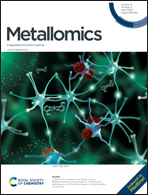Lanthanum chloride impairs spatial learning and memory by inducing [Ca2+]m overload, mitochondrial fission–fusion disorder and excessive mitophagy in hippocampal nerve cells of rats
Abstract
Lanthanum (La) is a kind of rare earth element (REE) widely found in nature. La has neurotoxicity and can impair learning and memory, but the underlying mechanism is still not completely clear. The mitochondrial calcium uniporter (MCU) complex can cause the uptake of cytoplasmic calcium ([Ca2+]c) into mitochondria and thereby resist [Ca2+]c overload. However, the abnormal increase of calcium in the mitochondrial matrix ([Ca2+]m) can also disturb the mitochondrial fission–fusion balance, and then induce excessive mitophagy, and disrupt mitochondrial quality control (MQC). It is unclear whether La can interfere with the function of nerve cells through the above-mentioned mechanism and thus impair learning and memory. In this study, four groups of Wistar rats were treated with 0%, 0.25%, 0.5% and 1.0% (w/v) lanthanum chloride (LaCl3) from the embryonic phase to 1 month after weaning. The results showed that La could impair the spatial learning and memory of rats, promote the uptake of [Ca2+]c by MCU, induce the abnormal increase of [Ca2+]m, up-regulate p-Drp1 Ser616 expression and inhibit Mfn1/2 expression, enhance mitochondrial fission and lead to mitochondrial fission–fusion disturbance in hippocampal nerve cells. Meanwhile, La could also activate the PINK1–Parkin signaling pathway, up-regulate LC3B-II expression and decrease p62 expression, and thereby induce excessive mitophagy. These results suggested that learning and memory impairment caused by La may be related to MQC disturbance. The present data provide some novel clues for elucidating the neurotoxic effect mechanism of La.
![Graphical abstract: Lanthanum chloride impairs spatial learning and memory by inducing [Ca2+]m overload, mitochondrial fission–fusion disorder and excessive mitophagy in hippocampal nerve cells of rats](/en/Image/Get?imageInfo.ImageType=GA&imageInfo.ImageIdentifier.ManuscriptID=C9MT00291J&imageInfo.ImageIdentifier.Year=2020)


 Please wait while we load your content...
Please wait while we load your content...